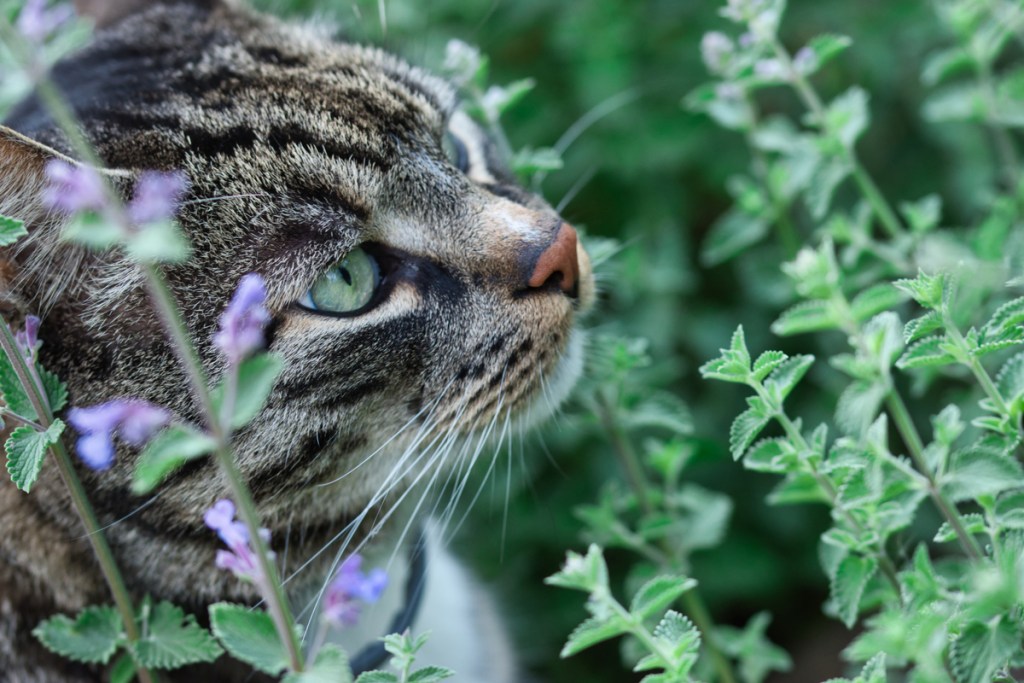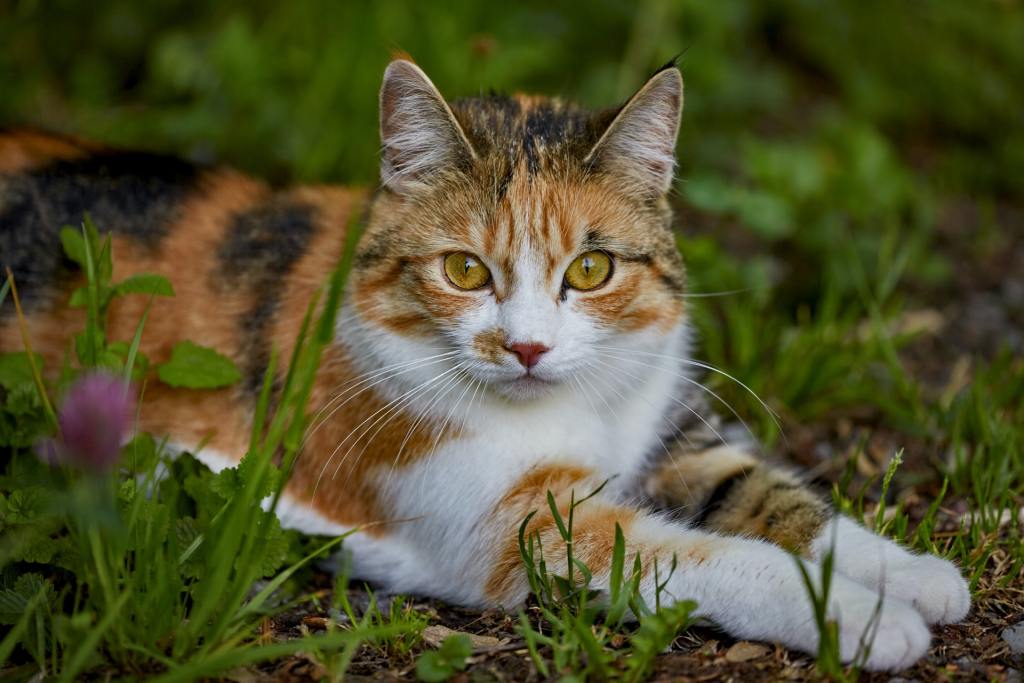From prayer plants to Boston ferns, there are plenty of nontoxic houseplants that cat parents can enjoy without worrying about their fur babies getting sick. While nontoxic houseplants are a great start, what about really treating your cat to plants that they can nibble on and play in? Level up your commitment to your cat by growing things they’ll love! From catnip to cat grass, here are the best common plants that cat lovers can keep to make their feline friends happy—in fact, you can even grow the following plants in the same pot to pamper your kitty.

Catnip
Many of us have an idea of how catnip affects many cats—cats will sniff it, roll around in it, or simply enjoy how it relaxes them! Part of the mint family, catnip is also known as nepeta cataria. Its grayish oval leaves and stems are coated with a chemical called nepetalactone, which attracts felines and causes them to kick, chew, and roll around. Note that not all cats react to catnip—in fact, about a third of kitties aren’t affected by it at all.
Catnip is a fast-grower that doesn’t require too much maintenance. Ideally, you should plant it in the spring six weeks before the last frost. When you bring it outside, give it at least six hours of full sun a day and water it when your soil dries out completely. Just make sure that you’re not leaving your plant in hot and humid conditions for too long. When you initially plant catnip into the ground, you can add compost to the soil, but there’s no need to fertilize it later. When your catnip blooms, that’s when you know it’s time to harvest it!
Cat thyme
Cat thyme, or teucrium marum, is another plant that’ll have your curious cat rolling around. It actually isn’t a thyme plant and is more closely related to the germander shrub. Cats don’t usually eat cat thyme because of its bitter taste, but they enjoy playing and napping in it—it can have the same effect as catnip in this sense! Cat thyme, which is perennial in zones 7b to 10b, can tolerate poor soil and hot conditions. An unruly grower if you don’t trim it, it features gray leaves with pink flowers and can grow up to one foot tall.

Cat grass
Without a doubt, cat grass is definitely acceptable as a treat for your feline friend, and you can usually buy it at pet stores. It’s actually a variety of grasses: oat, wheat, barley, rye, and orchard grass are typical inclusions. Many kitties love nibbling on grass, which can help them digest food and expel hairballs. If potential toxins and pesticides in lawn grass worry you, growing your very own cat grass is always an alternative option.
With cat grass kits, you get seeds and soil discs ready to go—all you have to do is add water! Some cat parents will also plant wheat seeds without kits—as with germinating any other herb, you’ll just need well-draining soil, bright light, warm temperatures, and water. However you grow cat grass, your kitties should be able to nibble on the seedlings in about two weeks.
Licorice root
Licorice root is excellent for your cat to chew on—it can help kitties digest and ease discomfort in cats with arthritis. Licorice can take three to five years to reach full maturity, so it’s worth investing in older plants if you can find them at your local nursery. For healthy growth, give your licorice plant sandy soil, and make sure to consistently water it and give it bright indirect light. Then, add mulch to retain moisture and prevent weeds. With licorice, fertilizing isn’t necessary, although you can mix in some compost when you prepare your garden soil. When the rhizomatic roots are long enough after about three to four years of cultivation, you can harvest them in autumn.
When you’re a plant and cat parent, you don’t need to solely stick to nontoxic ornamental houseplants. Treat your kitty by growing cat-friendly plants that they can roll around in and nibble on! These easy-going plants are like catnip to a foliage enthusiast—and they can be literal catnip (or cat thyme, cat grass, or licorice root) to your furry feline as well!
Editors' Recommendations
- How to propagate fiddle-leaf fig plants: A step-by-step guide
- How to care for philodendrons, a decorative indoor plant
- Jade plant care: A complete grower’s guide
- Elephant ear plant care guide: What you need to know
- Now that it’s more common, here’s how to care for your sought-after Thai Constellation Monstera



